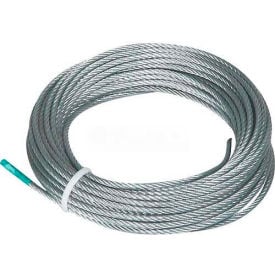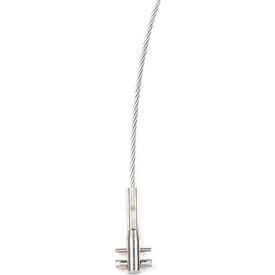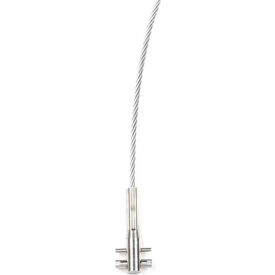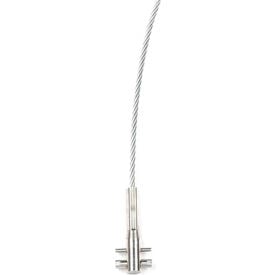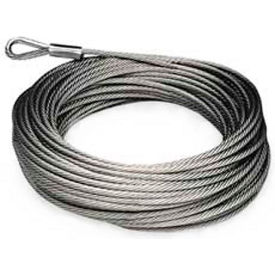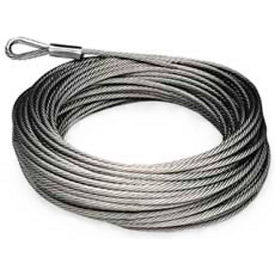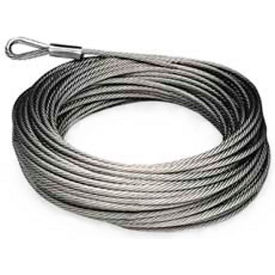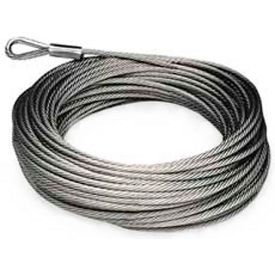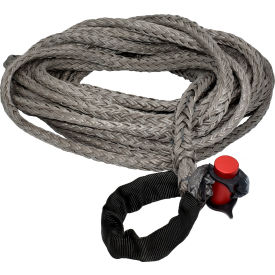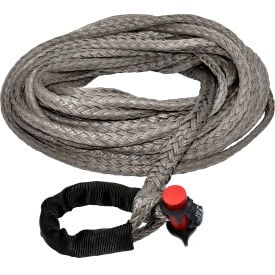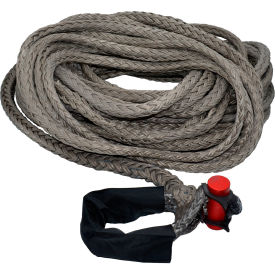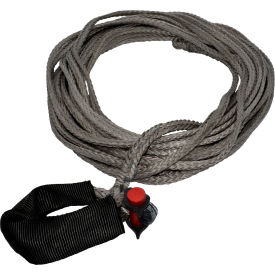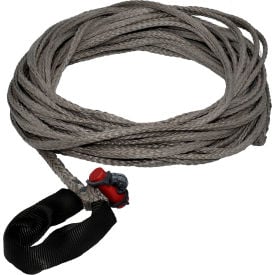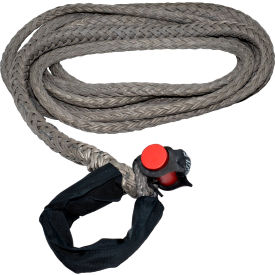A Comprehensive Guide to Aircraft Cables: All You Need to Know
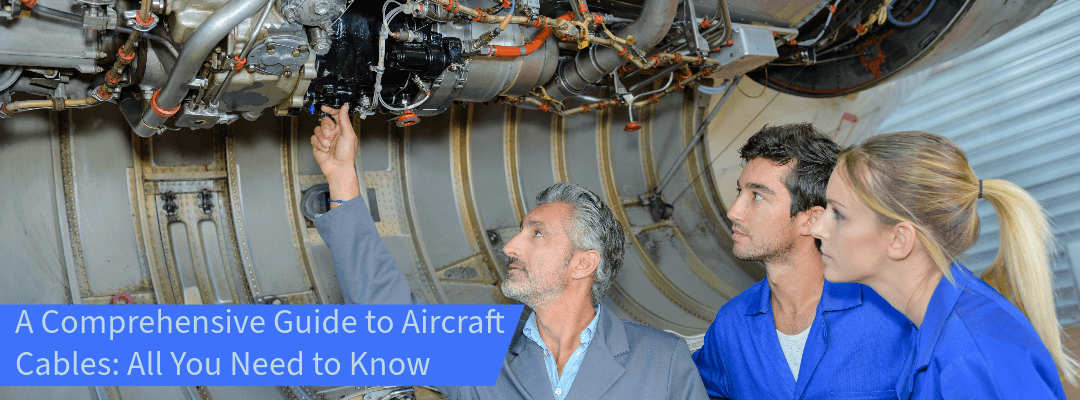
Overview
When it comes to aviation and the aerospace industry, the role of cables can't be overstated. Aircraft cables are special types of cables designed to meet the exacting requirements of the aviation sector. This blog aims to serve as a one-stop guide for understanding everything about aircraft cables, from their uses and applications to materials, strengths, and the different types available.
Wire Rope, Cable & Accessories
Expanded Uses and Applications of Aircraft Cables (Wire Ropes)
Aircraft cables are used for far more than just holding up the plane's structure or pulling it along a runway. These cables have a range of specialized applications designed to meet the exacting demands of the aviation industry. Here are some key uses:
- Flight Control Systems: The most critical use of aircraft cables is in the flight control systems. These cables are responsible for transmitting the pilot’s commands to the control surfaces like ailerons, elevators, and rudders.
- Landing Gear: Aircraft cables are essential components of the retracting and extending mechanisms of landing gears. Their strength and reliability ensure smooth and safe landings and take-offs.
- Cargo Operations: The cables used in cargo systems must meet stringent strength requirements. They are responsible for holding heavy cargo securely during flight and need to resist shifting or breakage under significant loads.
- Engine Connections: Aircraft cables also connect engines and other mechanical systems. The cables need to withstand high temperatures and corrosive conditions.
- Towing Operations: Towing an aircraft is no small feat, and aircraft cables make it possible. They are used in towing mechanisms to move planes on the ground.
- Rescue Operations: In some aircraft models, cables are part of rescue systems, such as emergency parachutes or flotation devices, where failure is not an option.
- Antenna and Sensor Connections: Aircraft are loaded with various sensors and antennas. The cables connecting these electronic components are also considered aircraft cables, given their special requirements.
- Utility and Maintenance: They are also used for various utility and maintenance functions inside the aircraft, from simple things like holding doors in place to more complicated functions like being part of the built-in diagnostic systems.
In the aviation world, these cables literally pull their weight and then some. They are crucial for everything from basic flight control to complex electronic interfacing. Selecting the correct type of cable for each application is essential, not just for efficiency but also for the safety of the passengers and crew. Therefore, understanding the numerous applications of these cables can go a long way in making informed decisions for their effective use.
Expanded Characteristics of Aircraft Cables
Aircraft cables are not just your everyday steel wires. They are specialized to meet the strictest requirements of strength, durability, and resistance:
- Material: Primarily, aircraft cables are made from stainless steel or galvanized steel. Stainless steel cables offer excellent corrosion resistance, whereas galvanized steel is more cost-effective.
- Strength: The tensile strength of aircraft cables is generally quite high, often exceeding 2000 MPa. This high tensile strength is crucial for meeting the rigorous needs of aviation.
- Flexibility: These cables are manufactured in varying degrees of flexibility to suit different applications. For example, cables used in flight control systems need to be more flexible than those used in structural support.
- Diameter: The diameters of these cables can range from 1/16 of an inch to 3/8 of an inch. The diameter is chosen based on the load the cable is expected to carry.
- Temperature Resistance: Aircraft cables must be capable of withstanding extreme temperatures, both hot and cold. This is especially crucial for those used near engines or in external applications.
- Corrosion Resistance: Given that aircraft often fly over oceans and through varying weather conditions, corrosion resistance is a significant factor in material selection.
- Fatigue Resistance: Due to constant loading and unloading cycles, these cables must also have excellent fatigue resistance.
Understanding these characteristics can assist buyers in making knowledgeable decisions tailored to their specific needs, ensuring that they get the most suitable, reliable, and safe cables.
Expanded Types of Aircraft Cables
7x7 Construction:
This type is moderately flexible and is used for general-purpose applications. It consists of seven strands of seven wires each, providing a good balance of strength and flexibility.
7x19 Construction:
This type is highly flexible and is often used in applications requiring movement, like pulleys and winches. It consists of seven strands of nineteen wires each.
1x19 Construction:
This is a stiff cable used in straight-line applications. It is made up of one strand of nineteen wires, making it less flexible but stronger in linear pulls.
Coated Cables:
These are usually coated with materials like nylon or vinyl for added protection against environmental factors. These are useful in corrosive environments or in applications requiring a softer touch.
Custom Cables:
Some applications require custom cables designed to meet unique specifications. These might include additional coatings, special materials, or unusual construction techniques.
Fiber Core and Steel Core:
The core of the cable can either be made of fiber or steel. A fiber core provides more flexibility, while a steel core increases strength.
Different types of aircraft cables are suitable for various applications, and the type of cable you choose will depend on what characteristics you need—whether that's strength, flexibility, or resistance to environmental conditions.
Who Purchases Them?
The market for winches and aircraft cables is diverse, driven by a range of purchasers with varying needs. Government bodies often make up a significant portion of these buyers, acquiring them for military aircraft, search and rescue operations, and other official functions. These are not just for the federal government either; local and state agencies may also require these components for their smaller-scale aviation tasks, emergency services, and even for managing large public events where aerial coordination is necessary.
Aviation companies, ranging from commercial airlines to cargo carriers, are another major segment that invests in these products. The role of winches and aircraft cables is crucial for them in areas like cargo management, maintenance, and safety measures. Moreover, charter services and private jet operators are also likely customers, particularly those involved in specialized services like aerial photography, geological surveys, or medical emergency services.
Maintenance service providers, the unsung heroes of the aviation world, are also significant buyers. They are the ones tasked with ensuring that everything is in tip-top condition, and they need a constant supply of reliable cables and winches to keep everything running smoothly. This could range from routine tasks such as replacing worn-out cables to more complex procedures like winch system overhauls.
Lastly, let's not forget niche markets such as outdoor adventure companies that offer paragliding, zip-lining, and other aerial activities. Though not their primary user, these companies also require aircraft-grade cables and winches for safety and operational efficacy.
Specifications and Price Range
When it comes to the specifications of aircraft cables used in conjunction with winches, the most commonly found types are 7x7, 7x19, and 1x19. The numbers here represent the construction of the cable, providing clues about its strength, flexibility, and other characteristics.
- 7x7: This type has seven strands of wire rope with seven wires in each strand, offering a good balance between flexibility and strength. The price range for 7x7 aircraft cables is typically between $0.50 to $1.50 per foot.
- 7x19: This configuration is one of the most flexible types of aircraft cable, often used in applications where the cable needs to go around pulleys. Its price usually ranges from $0.70 to $2.00 per foot.
- 1x19: These are composed of 19 individual strands, offering high tensile strength but limited flexibility. The 1x19 cables usually cost between $0.60 to $1.80 per foot.
Understanding these specifications and their associated costs can provide invaluable insights for purchasers from various sectors, ensuring that they acquire the right products for their unique applications.
Winches
Winches for Aircraft Cables: Uses and Applications
Winches and aircraft cables go together like peanut butter and jelly in numerous applications. Whether it's for hauling cargo into an airplane, assisting in emergency procedures, or even aiding in aircraft maintenance, winches equipped with aircraft cables prove to be indispensable. Below are some of their key uses and applications:
- Cargo Loading and Unloading: One of the most straightforward applications of winches in aviation is for cargo operations. Aircraft cargo winches are specialized to work quickly and efficiently, ensuring that cargo is securely loaded and unloaded.
- Aircraft Recovery: In the unfortunate event of an aircraft mishap, recovery winches equipped with strong aircraft cables are often used to pull the aircraft to a secure location.
- Towing and Positioning: Whether it's towing an aircraft to a maintenance hangar or positioning it on an aircraft carrier, heavy-duty winches serve as the muscle behind the operation.
- Emergency Evacuations: Some aircraft are equipped with winches as part of their emergency evacuation systems. These winches can lower life rafts, emergency supplies, or even personnel to the ground or water below.
- Parachute Deployment: In certain specialized aviation activities, like smokejumping, winches are used to retrieve the deployed parachutes for reuse.
- In-flight Refueling: Military aircraft sometimes use winches in complicated maneuvers like in-flight refueling.
- Search and Rescue Operations: Helicopters equipped with winches play a critical role in search and rescue missions, often in challenging weather conditions.
- Maintenance and Inspection: Winches are often used to hoist large pieces of equipment or even sections of the aircraft during heavy maintenance or inspections.
- Entertainment and Special Uses: Believe it or not, winches are sometimes used in air shows and for filming purposes, where aircraft perform intricate maneuvers.
When you're considering adding a winch system to your aviation toolbox, think about the kind of work you'll be doing most often. Will it involve heavy lifting, precise positioning, or rapid deployment? Answering questions like these can help you choose the right winch for your needs.
Explore Winches for Aircraft Cables
Winches for Aircraft Cables: Characteristics
When it comes to the characteristics of winches designed for use with aircraft cables, several critical aspects set them apart from regular winches:
- Material: These winches are often made of high-strength, corrosion-resistant materials capable of withstanding harsh environmental conditions.
- Load Capacity: Load capacity is a vital characteristic to consider. It can range from a few hundred to several thousand pounds, depending on the application.
- Speed Control: The ability to control the speed of the winch is essential, especially during delicate operations like cargo loading or rescue missions.
- Remote Operation: Given the often-dangerous environments these winches operate in, remote control capabilities are increasingly becoming standard features.
- Safety Measures: Features like emergency stop buttons, overload indicators, and fail-safe brakes are commonly found in aviation-specific winches.
- Versatility: Many of these winches are designed to be versatile, with adjustable settings to switch between tasks quickly.
Understanding these characteristics can be instrumental in choosing the right winch, ensuring you get the performance, reliability, and safety needed for your specific application.
Types of Winches for Aircraft Cables
- Electric Winches: These are the most common types of winches and are generally easier to control. They are ideal for less strenuous tasks and are usually equipped with multiple speed settings.
- Hydraulic Winches: Hydraulic winches offer more power and are better suited for heavy-duty applications. They are often used in military and large commercial aircraft.
- Manual Winches: These are hand-operated and are typically used for lighter tasks where electrical power is not readily available.
- Capstan Winches: These are specialized winches often used in naval aviation for tasks like landing and launching aircraft from carriers.
- Pneumatic Winches: These are air-operated winches and are usually found in environments where electrical sparks could be a safety concern.
- Self-Recovery Winches: These are designed to be used in emergency situations for self-recovery of the aircraft or for retrieving deployed equipment.
- Specialized Custom Winches: For unique requirements, custom winches can be designed to specific specifications, including load capacity, speed, and environmental resistance.
Each type of winch has its own set of pros and cons, so it's essential to evaluate your needs thoroughly before making a decision. From the type of power source to safety features, various factors need to be considered to ensure that you pick the winch that's right for you.
Who Purchases Them?
Purchased by aircraft manufacturers, airport ground staff, and maintenance crews, among others.
Specifications and Price Range
- Electric Winches: $200 to $800
- Hydraulic Winches: $500 to $2000
- Manual Winches: $50 to $200
Conclusion
Whether you're in the aviation industry, part of a rescue team, or simply a tech enthusiast, the world of winches and aircraft cables offers a fascinating mix of versatility, strength, and technological marvel. Understanding the intricacies of these components—from their types and characteristics to their myriad applications—can equip you to make informed decisions tailored to your specific needs. The next time you're looking to invest in aviation-related equipment, remember that winches and aircraft cables are more than just about pulling weight; they're about pulling off tasks with precision, safety, and efficiency.
Feeling better equipped about aircraft cables now? We hope this comprehensive guide has been of help. If you've got any questions, feel free to reach out!
For a range of products that meet all the criteria discussed, head on over to GoVets to browse our comprehensive catalog!






